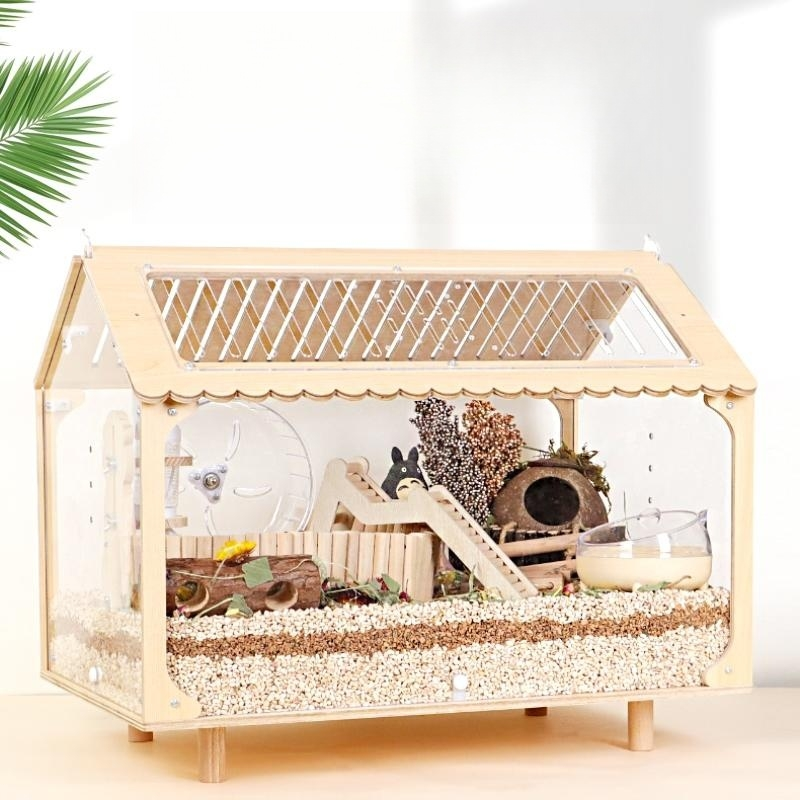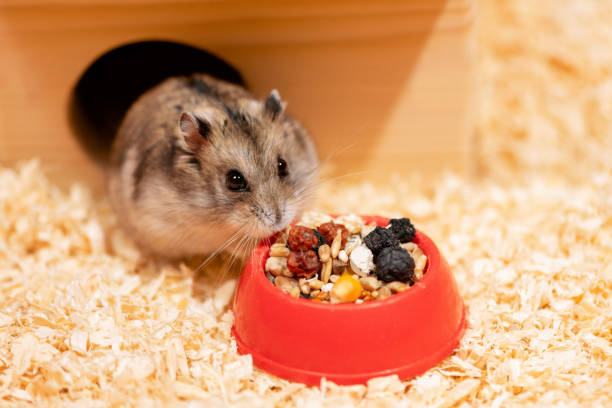Hamster Care for Beginners: Your Tiny Companion Guide 🐹
- Iqra Shaikh
- Jun 18
- 3 min read
Updated: 5 days ago
Small in size, big in personality — hamsters make adorable and entertaining pets. But don’t let their cuteness fool you — these tiny furballs need proper care, space, and attention to thrive. If you're ready to welcome a hamster into your home, this guide covers everything you need to know.
📌 What’s Inside:
🐾 Choosing the Right Hamster
Not all hamsters are the same!
Syrian hamsters: Larger, solitary, great for beginners
Dwarf hamsters: Small, social (can live in pairs with care)
Roborovski hamsters: Super-fast and shy — fun to watch but harder to handle
Choose based on your lifestyle and experience.
🏠 Setting Up Their Habitat
A hamster’s cage is their world — make it fun and functional!
Cage size: Minimum 24x12 inches and at least 12" tall
Add bedding (aspen or paper-based), nesting areas, and hiding spots
Include a solid surface running wheel (not wire!)
Place the cage in a quiet, stable-temperature room

🥗 Nutrition & Feeding Tips
A balanced diet keeps your hamster healthy and happy:
High-quality hamster pellets or mixes
Fresh veggies: broccoli, cucumber, carrots (small portions)
Occasional fruits: apple, banana (tiny treats)
Clean water daily in a drip bottle
Avoid citrus, garlic, onions, and chocolate — they’re toxic!

🎡 Playtime & Enrichment
Hamsters are night owls with loads of energy.
Provide tunnels, climbing toys, and chew blocks
Change up the layout of the cage regularly for stimulation
Let them explore in a playpen or supervised area — never loose on the floor!

🤝 Handling & Bonding
Bonding takes patience:
Start with gentle talking near the cage
Offer treats from your hand
Slowly work toward short, calm handling sessions
Avoid waking them up suddenly — a grumpy hamster might nip!

🚨 Common Health Signs
Monitor your hamster closely:
Watch for wet tail, diarrhea, or bald patches
Check for overgrown teeth and clean ears
Sudden behavior changes or excessive sleeping = vet time
Hamsters hide illness well, so act fast if you notice anything unusual.
🐾 Final Thoughts
Hamsters might fit in your hand, but they hold a big place in your heart. With just a little patience, the right setup, and a dash of daily care, these energetic little explorers will bring endless smiles and surprises to your home. 🐹💛
💡 Fun Fact
Hamsters have incredibly stretchy cheeks that can expand to the size of their bodies!
They use them to hoard food and transport it back to their nests—like tiny furry backpacks.
🧠 Pro Tip
Use a glass or large plastic bin cage instead of tiny wire cages — they’re safer, easier to clean, and more spacious for your furry explorer!
✅ Summary
Hamsters may be small, but they need big care! With the right home, a healthy diet, and gentle interaction, they’ll reward you with curious behavior, funny habits, and endless joy. Whether it’s their tiny paws or their midnight marathons, hamsters are a delightful addition to the family.
❓ Quick FAQs for New Hamster Owners
1. What type of hamster is best for beginners?
Syrian hamsters are great for first-time owners due to their docile nature and solo lifestyle. Dwarf hamsters are smaller and faster but can be more challenging to handle.
2. Can I keep two hamsters together?
Most hamsters, especially Syrians, are territorial and must be housed alone. Some dwarf species may tolerate companionship, but fights are common—monitor closely.
3. What should I feed my hamster daily?
A mix of high-quality hamster pellets, fresh vegetables (like carrots or broccoli), and occasional treats like fruits or seeds. Avoid sugary or sticky foods.
4. How big should a hamster cage be?
At least 450–600 square inches of floor space is ideal. Bigger is always better—hamsters love to explore!
5. Do hamsters need exercise?
Yes! Provide a solid-surface wheel (not wire) and tunnels or toys. A playpen or safe floor time also helps them stay active.
👉Read next:
Also a turtle & tortoise parent?
Check out our ultimate turtle & tortoise care guide
Follow us on:


Comentários